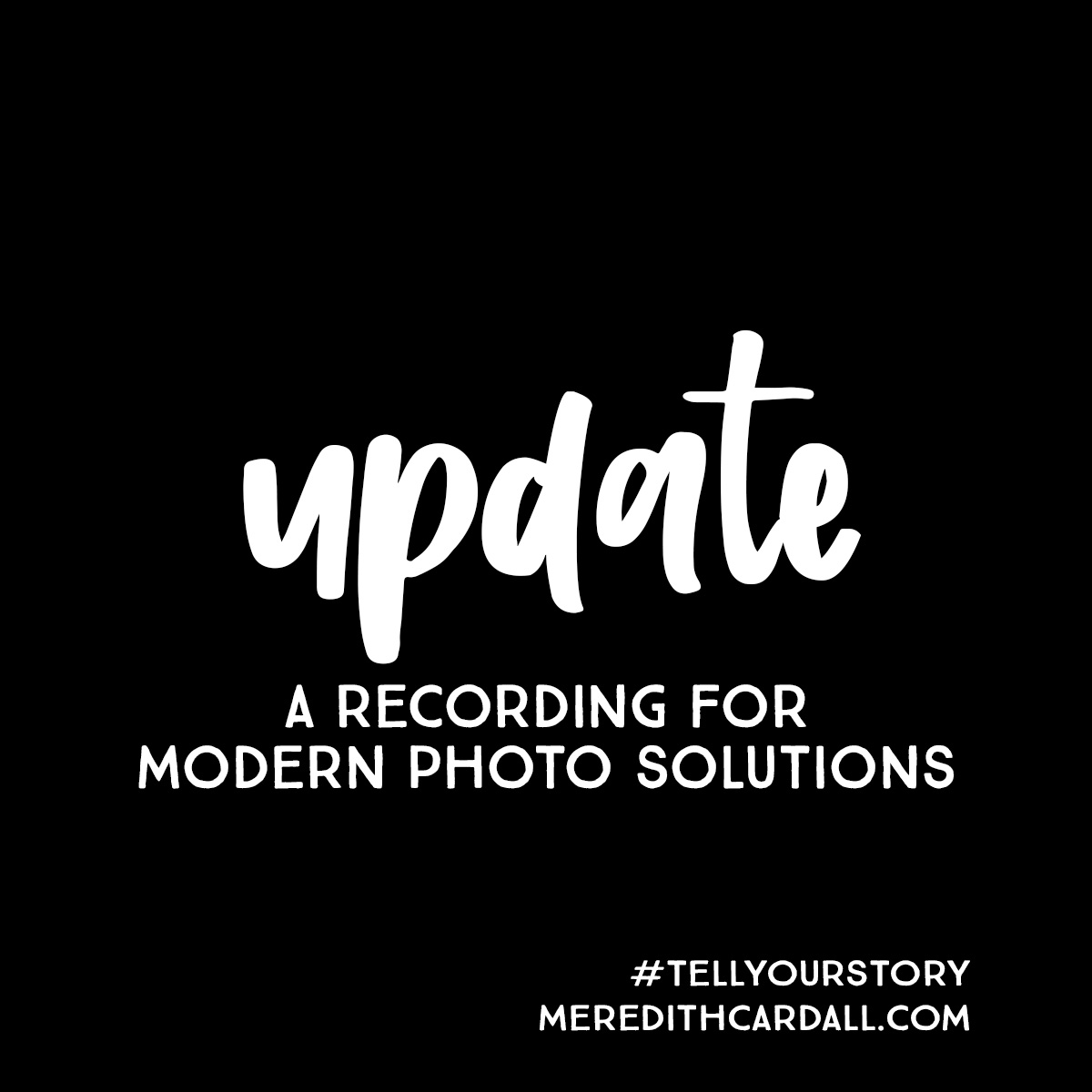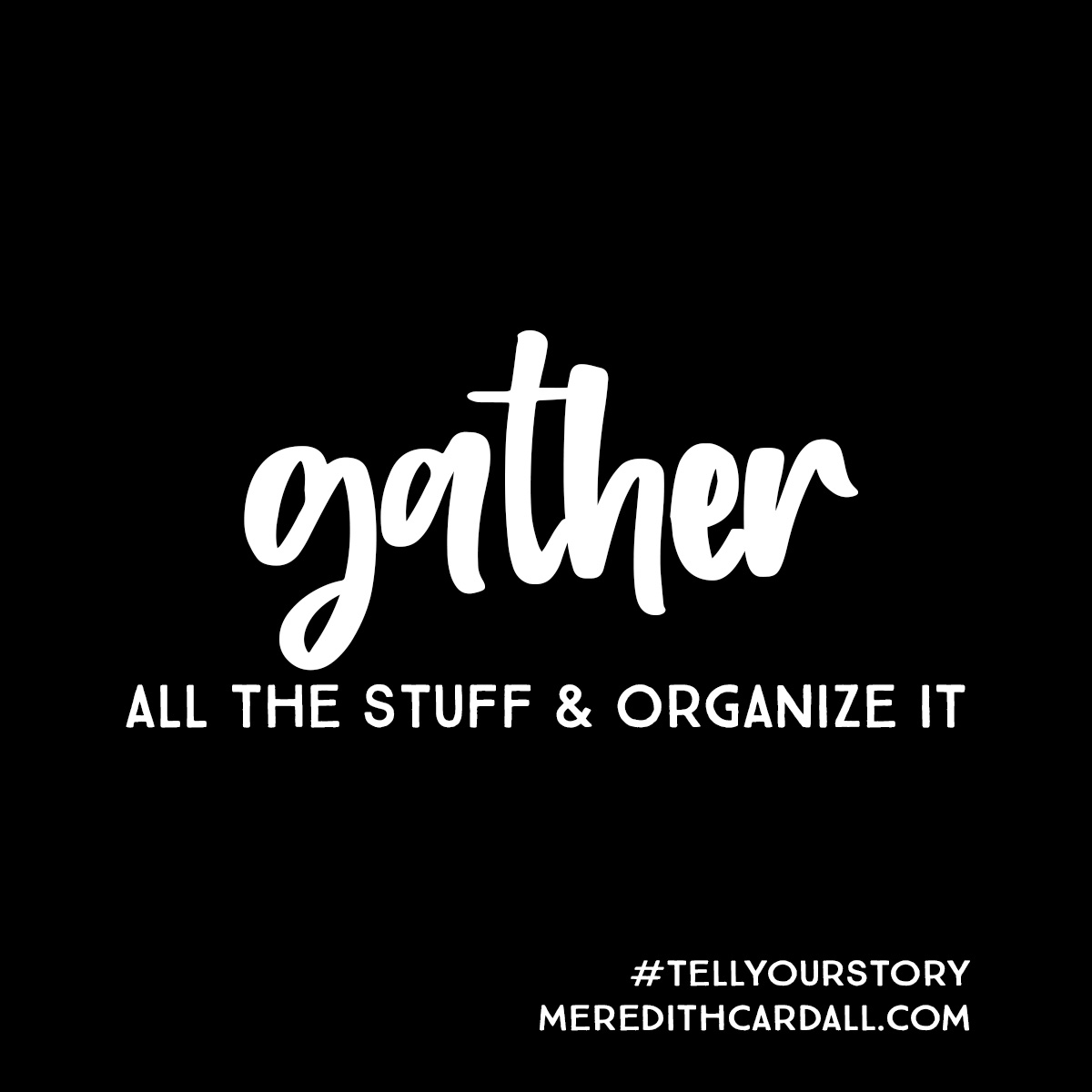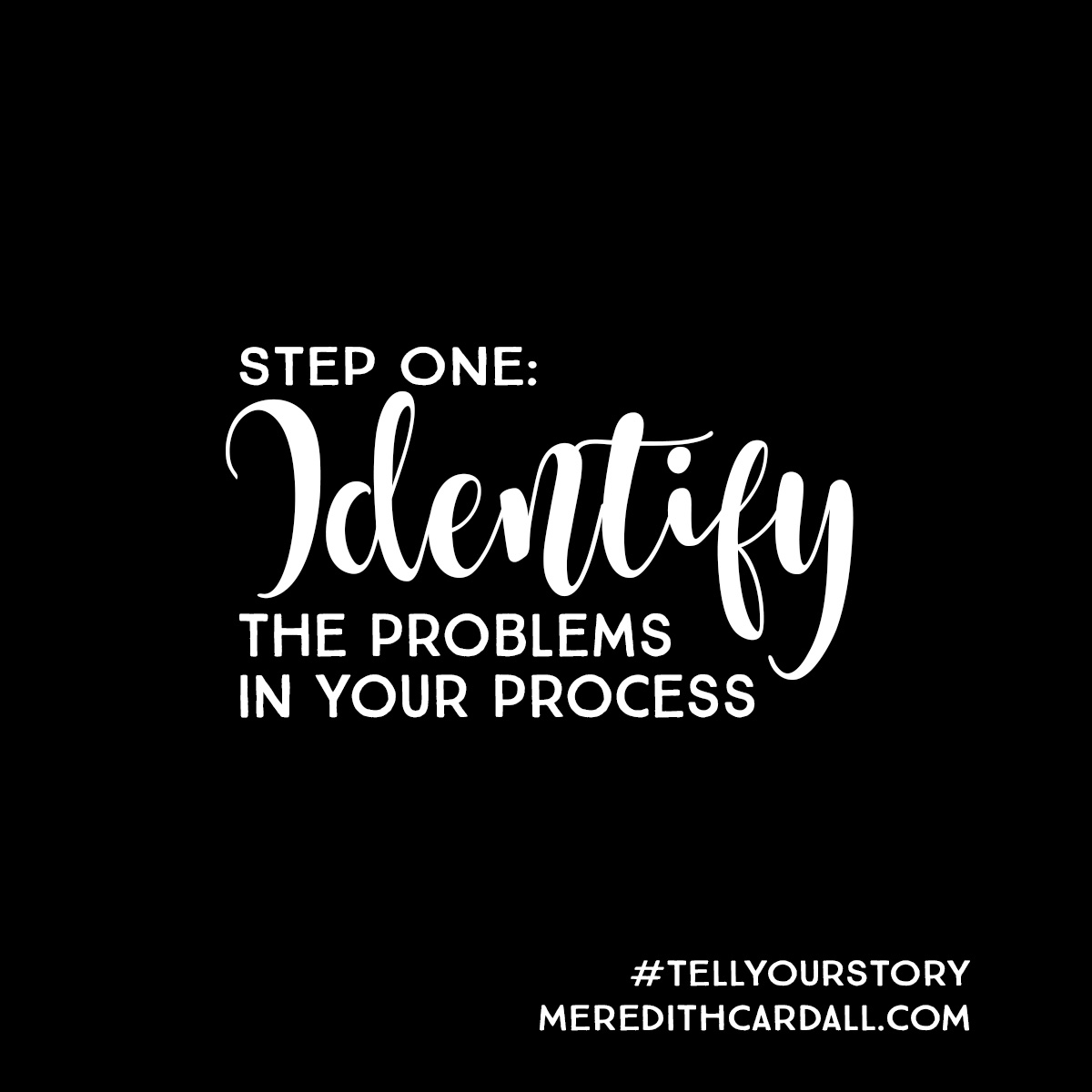This is the transcript of a recorded message played on Modern Photo Solutions, a podcast with Steph Clay, in Summer 2017.
Hi, this is Meredith from meredithcardall.com
I started digital scrapbooking in 2005 when my daughter was almost a year old. I skipped around and scrapbooked whatever I felt creatively inspired to scrapbook. Last year, I realized that I had gaping holes of time in my scrapbooks. Out of the previous 11 years, I only had TWO years completely scrapbooked, and had more than 15,000 unscrapbookeddigital photos, and boxes of 35mm photos. That’s a problem!
I was really overwhelmed at the enormity of the project of getting caught up. I took a quick look at my Photo folders and realized that I could remember most of what happened in 2013, but anything prior to that I would need to do quite a bit of research in order to do any meaningful journaling. I set a goal to finish scrapbooking all of 2013 by the end of 2016. I finished the very last page at 7pm on December 31st. My memory keeping goal this year is to stay current with 2017 while finishing my 2016 pages. One of the best solutions I have found for scrapbooking a large volume of photos is to use apps to scrapbook. While I do still enjoy scrapbooking as a creative release in Photoshop, I am using the Project Life app to scrapbook most of our everyday moments. I was able to scrapbook 11 pages yesterday between waiting in the carpool line at school & at a 1 hour play rehearsal. I can literally scrapbook anywhere I can use my phone.
Once my 2013 to current photos are all scrapped, I will go back to 2004 when my older daughter was born and start filling in the gaps. I am hoping that I can start that by the end of December. As I do my organizing & cleaning this spring & summer, I am purposefully seeking out and gathering all of the old journals, planners, calendars, photos and memorabilia that I have stashed in various spots throughout the house into one easily accessible spot in my office. I file those items it in monthly file folders. Anything that’s too large for a file folder or if I can’t determine the date it gets placed in a bin next to my desk for an Organization Sunday. Sunday evenings are my memory keeping and story-telling time. While most of that time I can be found scrapbooking, two Sunday evenings a month I dedicate at least some of my time to getting organized. At the beginning of each month, I make sure that I have tagged all of the previous month’s photos in Lightroom and back them up. I am backing up to an external hard drive as well as Google Photos, Prime Photos andDropBox. I also continuously back everything up with BackBlaze. My other Organization Sunday rotates to whichever Sunday I just don’t feel like scrapbooking. That’s when I go through the bin next to my desk and determine dates for the old photos and memorabilia. Then I file it in its monthly file folder. If I have time or if I find something really important that I wouldn’t want to lose, I will scan or photograph those items that evening as well. For documents or pieces of kids’ artwork that I want to include in our family album, I take a photo with my Samsung phone camera on my white desk. If it’s a photo or an important document I scan it using my 10 year old Epson Perfection 4490 Photo Scanner. I scan documents at 600ppi and important photos at 1200ppi. Through this purposeful searching for photos and memorabilia, I have found priceless family treasures in the form of letters written by my Granny who passed away more than 10 years ago. I have been able to digitize the letters so they’ll be available for future generations. My goal is to get them organized and uploaded to FamilySearch so that my extended family has access to these treasures as well.
I have a lot of work to do, but I’m excited to be making progress when I was completely overwhelmed just a short time ago.



